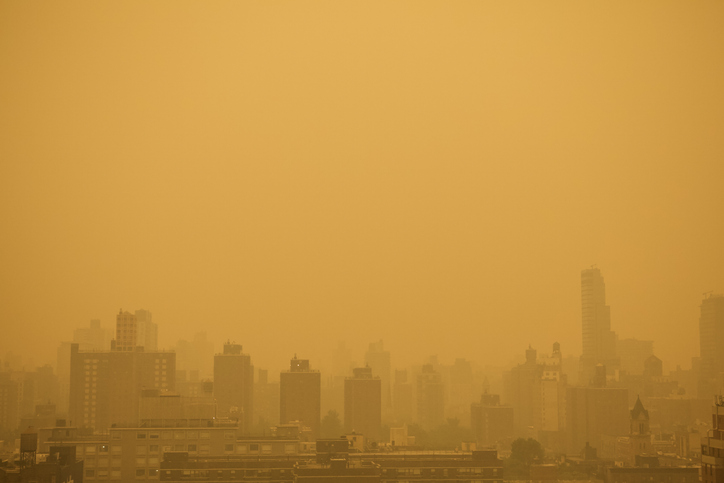
Every spring, the American Lung Association releases a report that should give all of us pause—especially those who care about public health, our environment, and the wellbeing of future generations. The 2025 State of the Air report is more than just a yearly update; it’s a nationwide wake-up call. This year’s findings are not just concerning—they’re downright alarming. A staggering number of Americans are now living in communities where the air they breathe could be harming their health on a daily basis. We’re talking about nearly half of the U.S. population—over 156 million people—exposed to unhealthy levels of pollution. Let that sink in.
What makes this year’s report so urgent is not just the size of the affected population, but the growing complexity of what’s causing our air quality to deteriorate. From intensifying climate events to socio-political factors, it’s a perfect storm that’s unraveling decades of progress. It’s not just about smog anymore. It’s about wildfires, heatwaves, systemic inequalities, and policy decisions that impact the air we all share. These aren’t just stats on a chart—this is about the breath you just took.
Nearly Half of Americans Are Breathing Unhealthy Air
For the first time in more than a decade, the number of Americans exposed to dangerous levels of air pollution has skyrocketed to over 156 million. This means nearly one in two Americans live in areas where the air fails to meet federal health-based standards. This isn’t a statistic you can ignore. It affects children walking to school, elderly residents gardening in their yards, and workers spending hours outside under the sun.
The most common culprits behind this rise are fine particulate matter (PM2.5) and ground-level ozone—both of which are invisible but dangerously potent. These pollutants seep into our lungs, aggravate asthma, trigger heart attacks, and even shorten lives. When air quality deteriorates to this extent, it’s not just an environmental issue—it’s a public health emergency. What’s more troubling is that this increase comes after years of declining pollution levels, revealing a backslide that we simply cannot afford to continue.
Climate Change Is Worsening Air Quality
If you think climate change is a problem for the future, think again. It’s already reshaping the air we breathe, and the State of the Air report makes it crystal clear. Rising global temperatures, intensified droughts, and prolonged wildfire seasons are major drivers behind the surge in air pollution. The connection is direct: hotter weather increases the likelihood of ozone formation, and dry conditions amplify the chances of large-scale wildfires, which pour harmful smoke and soot into the atmosphere.
Just picture a single wildfire burning across a state—its smoke doesn’t stay local. It drifts across regions, settles in valleys, and chokes cities hundreds of miles away. We’ve seen days when the sky turned orange, schools closed, and hospitals filled with patients suffering from respiratory distress. This isn’t rare anymore—it’s becoming routine. Climate-driven pollution is now a consistent presence, rewriting what “seasonal air quality” even means.
Racial and Socioeconomic Disparities Persist
One of the most distressing aspects of the report is the stark inequality in how air pollution impacts different communities. People of color and low-income neighborhoods bear a disproportionate burden of exposure to unhealthy air. It’s a pattern that has repeated for decades, deeply rooted in historical zoning, industrial planning, and systemic disinvestment. Communities situated near highways, factories, or ports often lack the political leverage or resources to push back, even as they suffer the worst effects.
The truth is, environmental justice is inseparable from environmental policy. It’s not just coincidence that some of the most polluted ZIP codes also have some of the highest rates of asthma, heart disease, and cancer. And yet, those who suffer the most often have the least voice in the decisions that shape their environment. Clean air should not be a privilege reserved for the wealthy or the well-connected—it is a basic human right.
Vulnerable Populations at Increased Risk
While air pollution harms everyone, its impact is devastating for the most vulnerable among us. Children, whose lungs are still developing, are particularly susceptible. Seniors, whose health may already be compromised, face heightened risks of respiratory and cardiovascular problems. And individuals with chronic health conditions—like asthma, COPD, or heart disease—experience more frequent, more severe symptoms when exposed to dirty air.
The 2025 report reveals that tens of millions of Americans in these at-risk groups live in counties where the air fails to meet safety standards. That means millions of parents worrying about their child’s wheezing during recess, or seniors skipping their evening walk due to an air quality alert. This is a deeply human issue—not just about charts and pollution levels, but about the quiet, everyday struggles families face when the air outside their homes becomes a health hazard.
Major Cities Face Severe Pollution Challenges
Some of the biggest urban centers in the U.S. are grappling with worsening air quality, and the trend doesn’t seem to be reversing anytime soon. Cities like Los Angeles, Phoenix, Bakersfield, Denver, and Houston continue to rank among the worst in the nation when it comes to ozone and particle pollution. These are places where millions of people live, work, and raise families—places where “air alert days” have become as common as cloudy skies.
Urban environments are especially prone to air quality issues due to the density of vehicles, industrial activity, and population. Add in geography—like basins that trap smog—and you’ve got a recipe for chronic pollution problems. City residents are being hit from all sides: more traffic congestion, more heat, more construction, and less clean air. The daily reality is stark—many people living in these cities can’t even open their windows without inviting pollution into their homes.
Policy Rollbacks Threaten Air Quality Progress
In the not-so-distant past, environmental policies played a huge role in cleaning up America’s air. Regulations on vehicle emissions, power plants, and industrial pollutants helped bring pollution levels down significantly over the past 50 years. But in recent years, some of those gains have been threatened by regulatory rollbacks and underfunded environmental agencies. The 2025 State of the Air report warns that progress is fragile—and increasingly at risk.
Weakening the very laws designed to protect public health doesn’t just slow down progress—it actively reverses it. A lack of enforcement, delayed updates to pollution standards, and resistance to stronger climate action are all contributing to the erosion of clean air gains. This isn’t just about bureaucratic red tape—it’s about lives. Every missed opportunity to strengthen policy is a missed chance to save someone from a preventable illness or death.
Urgent Need for Action and Advocacy
Perhaps the most powerful message of the report is this: it’s not too late. But it will be if we don’t act now. Fixing our air quality problem requires more than hope—it demands courage, commitment, and collective action. Individuals can make a difference by supporting clean energy, reducing personal emissions, and raising awareness. Communities can push for local clean air initiatives. And lawmakers must be held accountable to enforce and strengthen environmental protections.
Change doesn’t happen overnight, but it also doesn’t happen without pressure. Advocacy is the heartbeat of environmental progress. We’ve seen what’s possible when people raise their voices. Cleaner buses, stronger fuel standards, investments in green infrastructure—these are victories won by citizens who refused to accept polluted air as normal. The time to act is not tomorrow or next year—it’s now.
Suggested Links:
